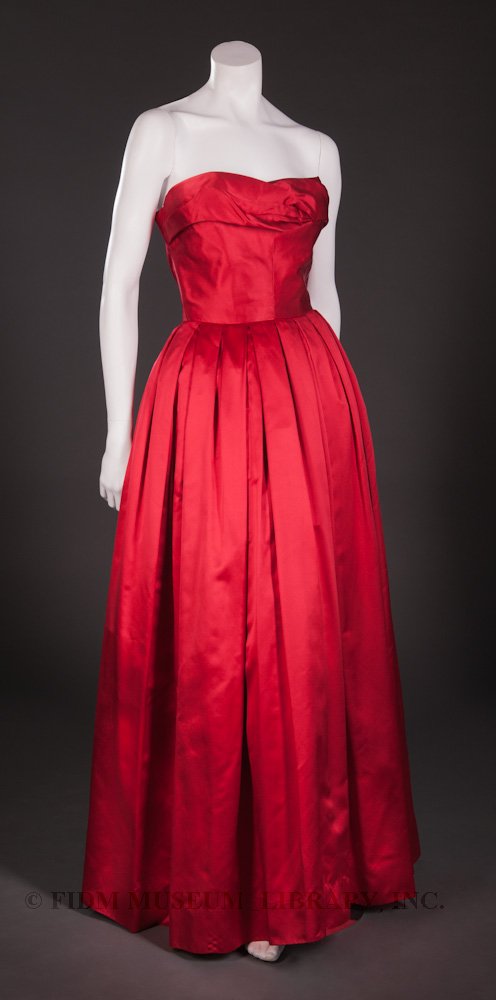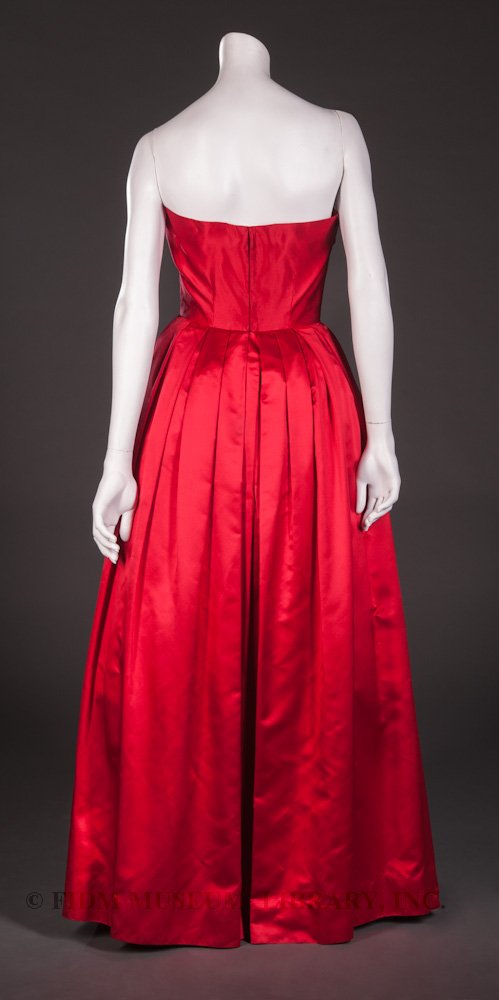Christian Dior's New Look, introduced in February 1947, was a dramatic turning point. Banishing the boxy suits and dresses of the World War II era, the New Look ushered in an era of exaggerated femininity. Based on shapely curves and contours, and using an extravagant amount of fabric, Dior's New Look appealed to consumers starved for luxury after the deprivations of World War II. The silhouette was instantly popular, and Maison Dior struggled to fulfill orders. Based on the spectacular success of this first collection, Dior and his business partners began enacting plans for international expansion. Eventually, Dior would open retail outlets in London, Venezuela, and New York.
 Evening gown (bodice detail)
Evening gown (bodice detail)
Christian Dior New York
c. 1953-55
Gift of Anonymous Donor
2003.40.31
To meet the North American demand for Christian Dior's designs, Dior opened a New York branch in October 1948. At this outpost of French style, a team of Americans distilled the essence of Christian Dior's haute couture collections into quality ready-to-wear garments for the North American market. Manufactured in the United States, often using US produced fabric, Christian Dior New York designs were very similar to the haute couture designs produced in Dior's Paris atelier. Though costly, Christian Dior New York garments were less expensive than one-of-a-kind haute couture. Customers were also saved the cost of a trip to Paris, and the cost of import tariffs on haute couture.
This Christian Dior New York evening gown is crafted from lustrous silk
satin in a show-stopping scarlet. Red appeared often in Dior's design
vocabulary, along with navy, black, grey, and cream. These colors allowed Dior's design details to shine. With this lustrous red, surface embellishment would have been overkill. It would have
also been costly. Attempting to replicate the applied decoration of
Dior's most memorable evening gowns would have forced a dramatic cost increase, placing this gown near the price point of haute couture.
In his haute couture evening gowns, Christian Dior often twisted fabric around the body, as seen in his Compiègne and Gruau evening gowns. The softly twisted bodice seen here is a ready-to-wear version of Dior's extravagant twists. These supple folds hide a rigid understructure; the bodice is supported by a boned inner corset of black cotton net. Requiring vastly more fabric than simple gathers, a precisely pleated skirt contrasts with the random folds of the bodice.
This décolleté silhouette is a classic of 1950s evening wear. For comfort, the gown was probably worn with a stole or wrap. Long evening gloves were a must, while upswept hair and a glittering necklace would have completed this glamorous evening ensemble.



